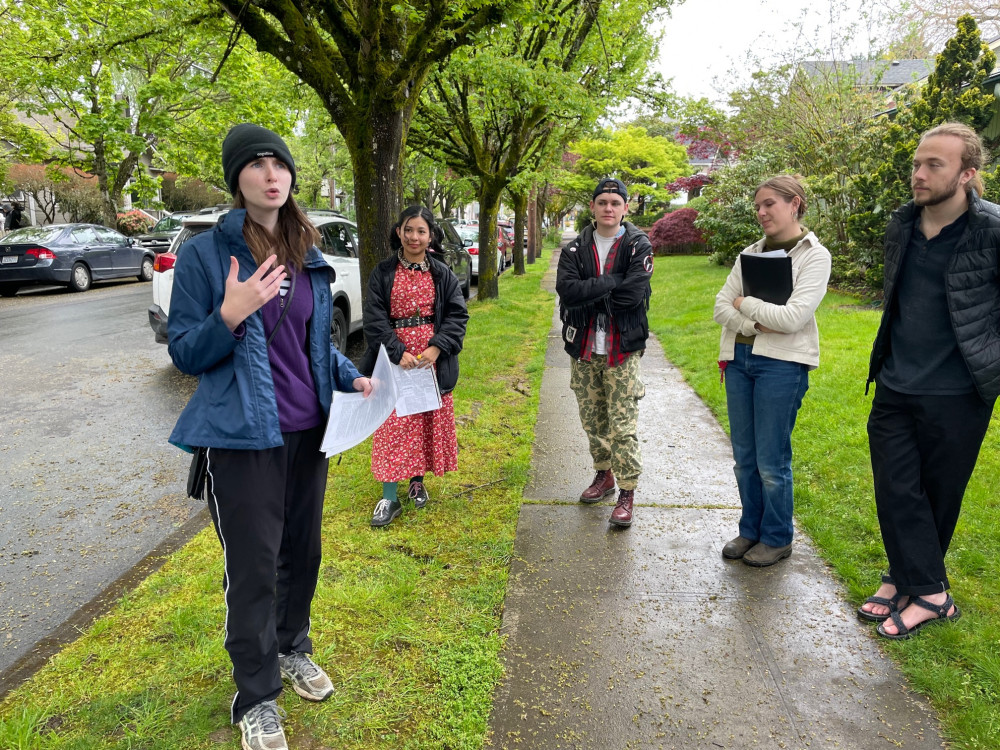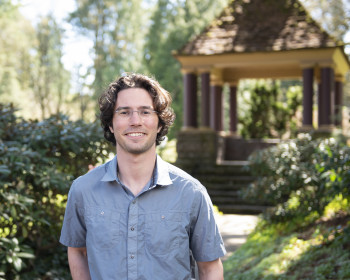From Stumptown to Portlandia: Students Explore Portland’s History
by Hanna Merzbach BA ’20
The city of Portland has a rich and often overlooked history. That’s why Reiko Hillyer, associate professor of history and director of ethnic studies, decided to create a class exploring the city’s history as it transitioned from a timber town to a hipster mecca.
Hillyer teaches the 200-level history course From Stumptown to Portlandia: The History of Portland, which was developed with funding from a Mellon Foundation grant. According to Hillyer, the introductory research methods course was founded as a way to get students to engage beyond the classroom and develop a deeper sense of place.
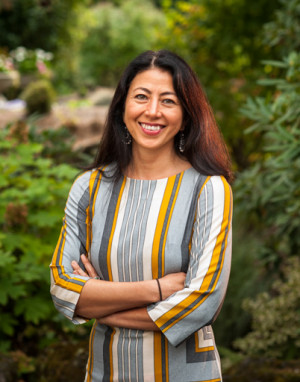
Credit: Steve Hambuchen“I do think that engagement in place is the beginning of engaging in community more broadly,” Hillyer said. “I find that when I understand the history of the place—what I’m walking through, what I’m looking at, what I’m standing on, what was here before—it really brings life to the study of history. It makes me feel more connected to the place where I am.”
The course focuses on the era between industrialization in the 1890s and gentrification and mass incarceration in the 1990s, with emphasis on topics such as immigration and social reform, Japanese-American internment, redlining, environmental racism, social movements, and urban renewal. Hillyer takes students outside the hallowed classroom walls, teaching them to look at the physical environment as a historical text.
“The city becomes a kind of laboratory,” Hillyer said. “I’ve had students tell me that they can’t even walk down the street anymore. They’re just noticing everything. I want students to notice and to wonder.”
Throughout the course, Hillyer emphasizes that many stories are best told in genres outside of the typical academic paper, through mediums like zines, poetry, film, and speculative fiction. For example, this spring, Hillyer’s students supplemented their reading of historical scholarship on the migration of African Americans to Portland during World War II with a walking tour through Vanport, a wartime public housing city in Multnomah County that was destroyed by a 1948 flood. According to Hillyer, both the creation and destruction of this city—Oregon’s second largest at the time—marked turning points in Portland’s history.
“We’re constantly going between past and present, and that’s one of the things that focusing on a place really allows you to do,” Hillyer explained.
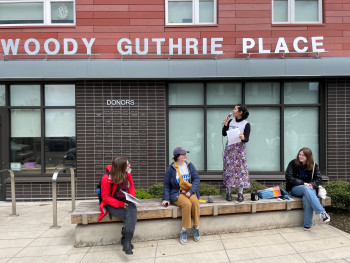
“It was another way to approach the history of Jackson’s neighborhood, the texture of it, the internal experience of it,” she said.
The class’s final projects expanded beyond the traditional: Hillyer tasked students with using their research methods skills to give walking tours around different parts of the city. They also came up with other creative projects, many of which documented the history of a city block or analyzed a cultural representation, such as the role of Slavic churches or Latin dance in the city.
Projects came in many shapes and colors. One student made a zine tracking the history of racist and antiracist skinheads in the Lents neighborhood. Another student wrote a creative nonfiction story from the viewpoint of the Skidmore Fountain in the Old Town Historic District, observing how the city has changed throughout the decades.
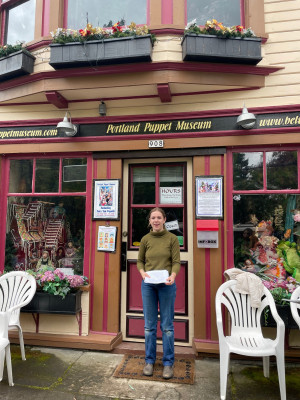
“This class provided me with unique opportunities to explore the layers of history that lie on every street of this city,” Oken said. “Reiko (Hillyer) has taught me to always be curious, to ask the difficult questions, to discuss the real issues, and to see the layers that lie around us.”
The end-of-year walking tours took the class everywhere, from Sellwood to Pioneer Square to 82nd Avenue. Paul Fredrickson BA ’22, an English major, was a part of a group that led the class through the Albina neighborhood, a gentrified area that has displaced many members of Portland’s African American community.
The group stopped off at Dawson Park, a historically popular community gathering site. One neighbor joined the group and shared his own experience in Albina.
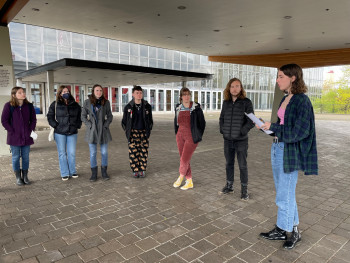
Another student, Lucy Clifford BA ’24, a biology major and neuroscience minor, said it’s experiences like this that made the ground she walks on in Portland come alive.
“Every brick, tree, telephone pole, and abandoned house has a story it wants to tell,” Clifford said. “Portland has not always been a place I have called home, yet this class has given me a lasting appreciation for the depth that this space holds, and for the privilege we are given to pause and hear what it has to tell us.”
More Newsroom Stories
Public Relations is located in McAfee on the Undergraduate Campus.
MSC: 19
email public@lclark.edu
voice 503-768-7970
Public Relations
Lewis & Clark
615 S. Palatine Hill Road MSC 19
Portland OR 97219
